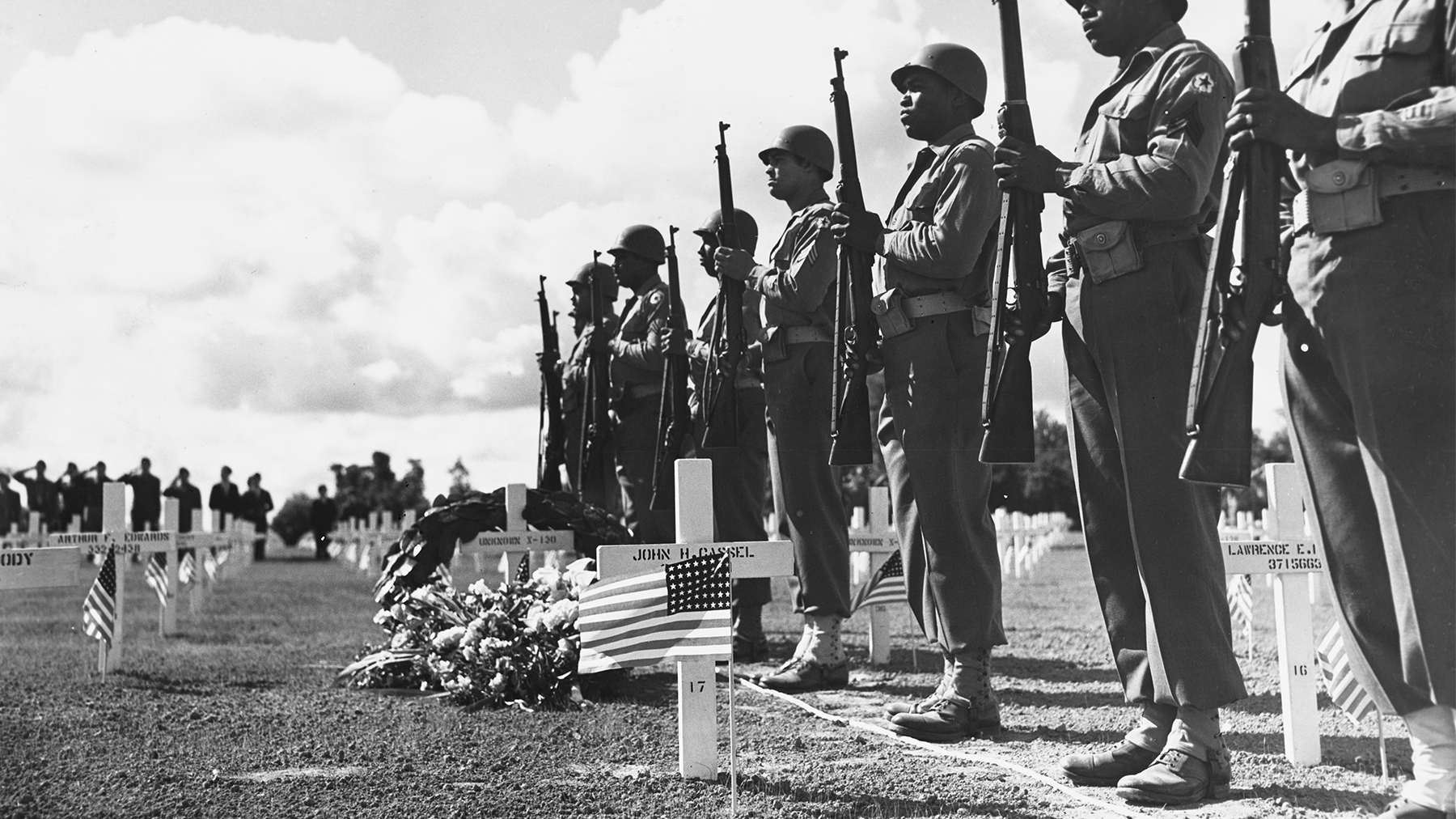Less than one month after the Union Army declared victory in 1865, Black soldiers, alongside Black people freed from slavery, reburied the bodies of Union soldiers who were dishonorably placed into a mass grave in Charleston, South Carolina. These Black patriots decorated the graves with spring flowers and paraded more than 10,000 people strong in celebration of freedom. This remarkable event is considered the first Memorial Day on record.
Who we remember, and who we choose to honor, matters in the arc of history. Yet stories like these often go untold and unacknowledged. Instead, memorials that valorize the Confederacy – and the secessionist, white supremacist regime it represents – have for too long been erected and celebrated across the country, including in our government’s most powerful institutions.
In 2020, recognizing the need for change, Congress mandated that the Department of Defense remove all “names, symbols, displays, monuments, and paraphernalia that honor or commemorate the Confederate States of America” by Jan. 1, 2024. Slow progress has been made to date, and there should be no cause for further delay. The department must meet its deadline and reconcile the Confederate propaganda campaign – a necessary leap forward for racial healing within the military’s ranks and our nation.
Confederate memorials have been strategically placed in public places to intimidate and terrorize Black Americans. After the Civil War ended, the United Daughters of the Confederacy (UDC) and the Sons of Confederate Veterans (SCV) led a campaign to rewrite the story of the Civil War and glorify the South. The “Lost Cause” narrative buried the true origin of the war – slavery – and further entrenched white supremacy into the fabric of daily life, including through the widespread embrace of Confederate symbols. Despite the loss of more than 750,000 American lives, the U.S. military joined the UDC and SCV in this shameful crusade.
Today, roughly 750 such memorials are scattered on military sites across the United States and abroad, some commissioned as recently as the 2000s. Through the Southern Poverty Law Center’s Whose Heritage? project, we have documented more than 2,000 Confederate symbols currently in U.S. public spaces. These symbols show up in or on military property, government buildings, schools, parks, cities and streets.
Since Congress ordered the removal of Confederate associations at military sites more than three years ago, the Defense Department has renamed five military bases. This month, Georgia’s Fort Benning removed the name of Henry Benning – a man who wrote in 1850 that “the doctrine of states’ rights will be the only security for slavery.” Fort Benning is now called Fort Moore, in honor of Hal Moore, a Korean and Vietnam War veteran who earned the Distinguished Service Cross for valor, and his wife Julie, an activist and leader in supporting military families. We applaud this step, but far too many other military assets remain in place. Tragically, our country still has four Army bases named after men who waged war to preserve white supremacy and the enslavement of millions.
Service members of color represent 46% of the U.S. armed forces. In places where they are stationed to serve our nation, they should not have to tolerate the reverence of men who defended slavery and white supremacy. No American should be asked to serve in a military that embraces symbols of terror and hate.
As we approach the Department of Defense’s deadline to rid itself, once and for all, of these dehumanizing symbols, the department must also address the deep-rooted racism and extremism within the military’s ranks. The Jan. 6, 2021, insurrection underscored, with horrific consequence, the prominent role that people with military experience play in the far right. According to a CNN review of court documents, roughly 10% of those charged in connection with the riots have ties to the military.
Like the base names and other offensive iconography sanctioned by the military, the placement of memorials in the U.S. Capitol, statehouses and public squares perpetuates the campaign to erase the Civil War divide – between slavery and freedom – and the attempt to rebrand Confederate traitors as American heroes. Congress must take action to remove the eight Confederate statues that remain in the U.S. Capitol. States and municipalities must also follow suit to remove all statues and symbols from public property.
It wasn’t until the late 1990s that the story of Memorial Day’s earliest origins surfaced in an old Harvard University archive. Thankfully, the historian behind the discovery brought the knowledge to the American public. But so many stories of our nation’s heroes, especially those pushed to the margins, remain untold. It is up to all of us to shine a light on the full truth of our history – and honor those who fought for our democracy and our highest ideals of justice, equity and liberation.
Let us mark this Memorial Day as the last holiday with Confederate symbols commanding military and public property – and memorialize all service members who heroically defended and continue to defend our freedom. They deserve this high honor.
Photo at top: In a photo from June 13, 1945, Black U.S. soldiers stand beside the graves of their fallen comrades during a Memorial Day ceremony held at Blosville American Cemetery near Sainte-Mère-Église, France. (Credit: American Stock Archive/Archive Photos/Getty Images)



